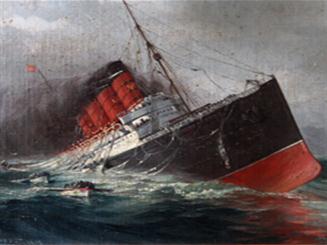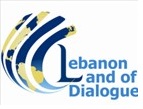Lebanon’s cinematographic heritage
One man’s mission to safeguard Lebanon’s reel history
Abou Zafer Henri Azar is a film archivist, reference librarian and researcher at the Ministry of Culture’s department for cinema, theatre, television and exhibitions. He is also a repository of endless stories and anecdotes.
He believes that Lebanese films are an integral pert of the country’s heritage, worth viewing, celebrating and preserving. Asked which classic Lebanese films he’d entrust to a time capsule, Zafer Henri Azar, hesitates, then mentions Maroun Baghdadi’s oeuvre, titles by reel pioneer George Nasr, Henri Barakat, Youssef Chahine, the Rahbani Brothers, Mohamad Salman and Samir Ghoussayni
While time capsules are of limited use, archives are invaluable, and Azar was instrumental in setting up the archive he now runs in a building next to UNESCO. Having studied cinema at the University of Kaslik in Beirut, Azar went on to be an employee of the Ministry of Information, otherwise known as the Centre National du Cinéma (CNC). He has been working in this field since 1975: “I used to work under the Ministry of Information, starting at the age of 20. I’ve worked as a journalist, cinema critic, writer and produced many shows for Lebanese TV including a show on cinema.”
Over the years, Azar has been cataloguing and scanning old material, shifting 16mm and VHS to DVDs, moving along with the digital age whilst also preserving original posters, cinema magazines, academic work – anything cinema related. He has done this work out of his great passion for cinema, often making his own material and equipment available to others – researchers, journalists, academics, cinema professionals, students, directors, all come to Abou Zafer for help. He says: “For documentary films we always agree to provide clips, or short sequences, and it’s nice when they acknowledge the source.”
“There is a great need to invest in this center and enrich the stocks of what we currently have,” Azar underlines. “The 16 and 35 mm material needs to be restored and digitized, this requires funding and expertise, otherwise it will be forever lost; there are hundreds of such films, short, feature and documentary…” he adds.
Lebanon’s cinematic history though laudable is also slightly incoherent. According to filmmaker Hady Zaccak who directed the recent documentary Taxi Beirut, “in Lebanon, unlike in other countries, there are a bunch of filmmakers rather than a cinema industry. Lebanon’s cinema is a cinema of loners.” Among the figures that stand out is Giordano Pidutti who, together with a few friends, made The Adventures of Elias Mabrouk in 1929. Pidutti’s silent comedy, according to George Sadoul, author of The Cinema in the Arab Countries, “tells the story of a Lebanese emigrant who came back from America to find his family and relatives after a long absence.”
The late 50’s to the 1960’s saw a remarkable surge of activity in the Lebanese film industry. Large capital sums were invested. enabling new, state of the art studios to be set up. By the mid-60s, ticket sale levels reflected the heightened activity with Lebanon’s 200 cinemas selling an astonishing 32 142 000 tickets per year. These ticket sales generated LL24 075 000 in income. According to George Sadoul, author of The Cinema in the Arab Countries, this figure represented 2/3 of the Egyptian market, for a population one tenth of the size.
During this period, Julio de Lucci and Karim Bustany directed In the Ruins of Baalbeck (Bayn Hayakel Baalbek. Made in 1956, this was the first film entirely produced in an Arab country, which was not, unlike Egyptian movies, sent to France for developing. It is also noteworthy that the film’s producer was Herta Gangour, a Lebanese woman of German origin, who in 1933 established Lumnar Film Company. In the Ruins of Baalbeck was not only screened across Lebanon – copies were sent to France, a number of African and Arabic countries and its producers were able to cover their costs and even made a small profit.
One of the pioneers highlighted by Azar, George Nasr, was the first Lebanese national to graduate from UCLA in cinema studies. On his return from America in 1957 he directed Whither (Ila Ayn). Labelled a poetic work, telling the story of a Lebanese peasant who had emigrated to America only to return to his native Lebanon as poor as he had left, Nasr’s film represented Lebanon at the 1958 Cannes Film Festival. To this day it remains one of the most important examples of the seventh art to have come out of Lebanon.
Three major films involving the Rahbani brothers were released in quick succession: Youssef Chahine’s Biyaa’ al khawateem (The Ring Seller) in 1965, Safarbarlek made in 1967 and Bint el harass (The Guard’s Daughter) in 1968 by Henri Barakat. Fairuz was the main character in all three of these musical masterpieces.
The Lebanese film industry was also affected during this period by Egyptian President Gamal Abdel Nasser’s nationalizing the Egyptian cinema industry in 1963, provoking Egyptian filmmakers to head to Lebanon. “The Golden Age was about to start for studios especially Studio Baalbek. The production is at its peak, decreasing at the same time the quality and the Lebanese identity of the films,” filmmaker Zaccak notes.
From 1963 on Ciné Clubs were the rage, Azar recalls. “In all big schools and summer camps, there were screenings, eventually up to 40 screenings per months, up to four per day” He adds “The Ciné Club de Beyrouth was to promote cinema culture, they were serious about what they were doing, most often graduates, educated people,” This club was established specifically to cater for Arabic speaking audiences and showcase Arabic films in their original versions, Lebanese cinema critic and founder of the Beirut Arab Cine-Club Walid Chmeit explains.
With the war breaking out, local production plummeted to one to two films a year. This also, however, marked the rise of new talents and tendencies. “Intellectual directors started portraying a wounded country with politically conscious films,” Zaccak explains. Among these “intellectual” largely left wing filmmakers were Baghdadi, Borhane Alaouieh, and Jean Chamoun. Baghdadi’s Beirut oh Beirut, a milestone in modern Lebanese cinema, was a prophetic film, fatefully set for release 15 April 1975, as Azar recalls. Later titles would include Little Wars in 1982, Lebanon, a country of honey and incenseand Hors la vie (Out of Life) for which Baghdadi was awarded the Jury Prize in Cannes in 1991.
The Lebanese war years brought award-winning women directors to the fore: Jocelyne Saab, Randa Chahhal Sabbagh and Leyla Assaf-Tengroth, the
latter writing, producing and directing Martyrs, a riveting, astutely observed film on suicide bombers shot in the middle of the war raging in Lebanon in 1986.
According to Azar, “The films we have need to be preserved, they depict life in the countryside, they reveal so much of times long gone, then there are the Lebanese-Egyptian co-productions, the great works of the 1960’s, when so many films were made. Many were bad, of course, at times the idea was to attract tourists… Some were shot in black and white, in the countryside, old neighborhoods – they are a unique visual historical documentary of Lebanon.”
Maybe Lebanon should once again take inspiration from Egypt, where the Ministry of Culture vouched 20 million Egyptian pounds (USD 3.3 million) in grants to filmmakers for 2012. This has helped 37 films, including 17 full-length films into production.














